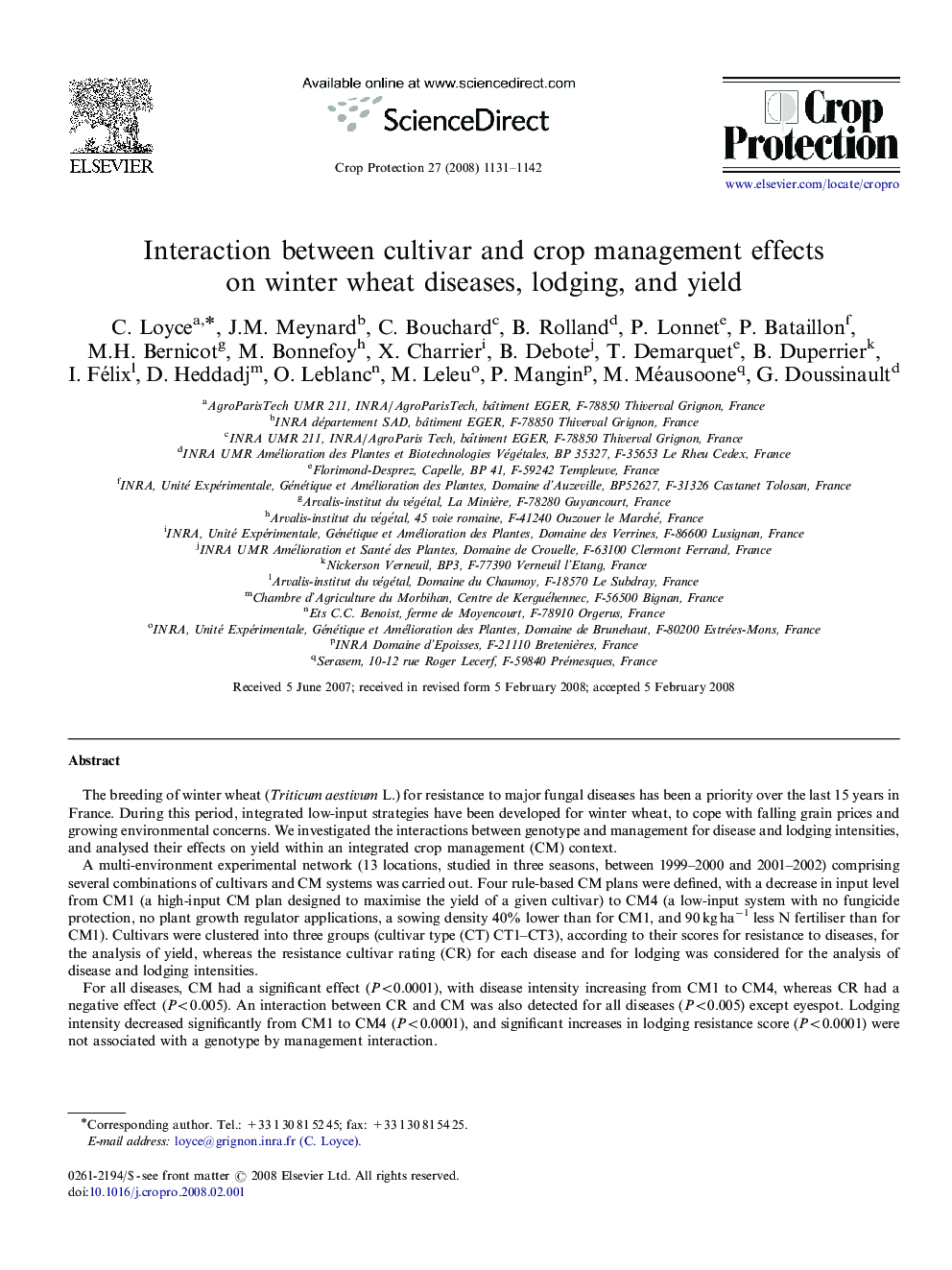| Article ID | Journal | Published Year | Pages | File Type |
|---|---|---|---|---|
| 4507761 | Crop Protection | 2008 | 12 Pages |
The breeding of winter wheat (Triticum aestivum L.) for resistance to major fungal diseases has been a priority over the last 15 years in France. During this period, integrated low-input strategies have been developed for winter wheat, to cope with falling grain prices and growing environmental concerns. We investigated the interactions between genotype and management for disease and lodging intensities, and analysed their effects on yield within an integrated crop management (CM) context.A multi-environment experimental network (13 locations, studied in three seasons, between 1999–2000 and 2001–2002) comprising several combinations of cultivars and CM systems was carried out. Four rule-based CM plans were defined, with a decrease in input level from CM1 (a high-input CM plan designed to maximise the yield of a given cultivar) to CM4 (a low-input system with no fungicide protection, no plant growth regulator applications, a sowing density 40% lower than for CM1, and 90 kg ha−1 less N fertiliser than for CM1). Cultivars were clustered into three groups (cultivar type (CT) CT1–CT3), according to their scores for resistance to diseases, for the analysis of yield, whereas the resistance cultivar rating (CR) for each disease and for lodging was considered for the analysis of disease and lodging intensities.For all diseases, CM had a significant effect (P<0.0001), with disease intensity increasing from CM1 to CM4, whereas CR had a negative effect (P<0.005). An interaction between CR and CM was also detected for all diseases (P<0.005) except eyespot. Lodging intensity decreased significantly from CM1 to CM4 (P<0.0001), and significant increases in lodging resistance score (P<0.0001) were not associated with a genotype by management interaction.Lastly, yield was significantly affected by CM (P<0.0001), CT (P<0.0003), and CM by CT interaction (P=0.0023). Cultivar ranking differed as a function of CM for yield, demonstrating that breeding programs focusing on cultivar evaluation in high-input environments do not result in the selection of cultivars suited to low-input environments.
